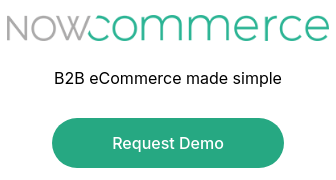Everybody loves taking a new order from a customer. In fulfilling the order, things can get a little tricky. If your business is like most, you haven’t quite found the perfect, streamlined system for efficiently fulfilling customer orders.
 Maybe the order is initially placed on an order form with a salesperson or over the phone with a customer service representative. That person may then input the order into an electronic system. Many companies then use multiple platforms to communicate order information to various departments, such as billing, distribution, and customer service.
Maybe the order is initially placed on an order form with a salesperson or over the phone with a customer service representative. That person may then input the order into an electronic system. Many companies then use multiple platforms to communicate order information to various departments, such as billing, distribution, and customer service.
That kind of disjointed process is inefficient because it involves multiple people duplicating the same task over and over. It also creates opportunities for order information to get lost along the way. The more often an order has to be input into a new system, the greater the likelihood of a mistake.
Implementing automated order entry software is one of the most effective ways to streamline your order system. Many business owners believe that order entry software provides another outlet for customers to place orders. Order entry software allows customers to place orders directly, but it also does much more. It automates your fulfillment process.
Here are three critical tasks that can be automated with order entry software:
1) Transferring information into your accounting software.
How much time do your billing or accounting people spend simply retyping orders into QuickBooks or whatever other accounting system you use? If you answered “too much,” you're not alone. Many businesses use this inefficient process daily because they aren't aware of a better alternative.
Order entry software can often be linked to your accounting software. That means the order information can automatically be loaded into the accounting software as soon as the customer places the order. No more retyping order information into accounting software. It's already in the system, along with all the relevant pricing, costs, and billing information.
2) Sending the order to your distribution team.
The best order entry software systems can be configured to work with your distribution department or a third-party fulfillment center. When your customer places an order, the order information is sent directly to the distribution team. They can gather the necessary information, assemble the required items, and send them to the client.
With this process in place, you no longer need to call, email, or fill out a form to ship an order from your distribution facility. It just happens automatically with no additional steps.
3) Maintaining order status information.
Does this process sound familiar? A customer asks one of your sales reps about the status of his order. The sales rep then calls your back office to inquire about the order. One of your back-office employees pulls the initial order and then checks with the distribution facility to see where the order is. After the order is tracked down, the distribution facility calls the back office employee, who then calls the sales rep back. Finally, the sales rep updates the customer as to the order’s whereabouts.
This whole process is unnecessary. Order entry software allows you to automate the entire customer management experience. Since the order entry software is linked to your distribution facility, the order status is always available online. If a customer asks your sales representative about an order, the representative can pull it up online and provide a status update within seconds.
Many businesses make the mistake of thinking that a sophisticated order entry system can only be implemented by very large companies. That’s not the case. An order entry system is an easy, affordable, and effective way for you to take back control of your order entry process and streamline your operation.

